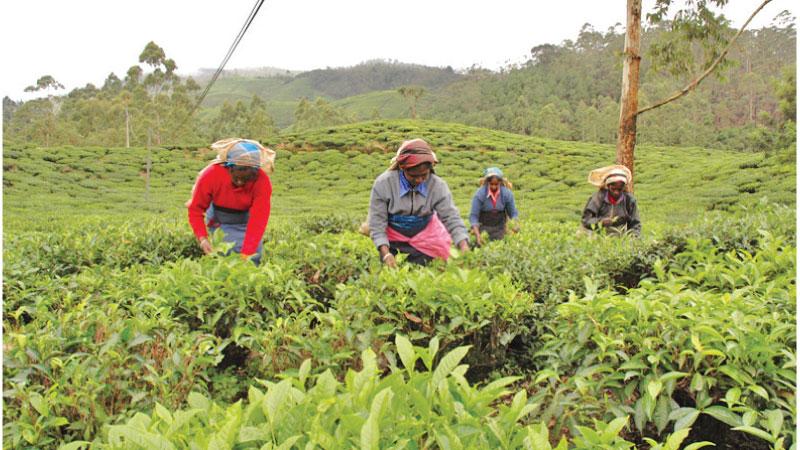
Sri Lanka defaulted on its sovereign debt in May 2022, plunging the country into economic and political chaos.
The Government secured a $2.9bn (£2.4bn) International Monetary Fund bailout in principle the following September.
 But the cash will not be released to Sri Lanka until its sovereign creditors in China and India first agree to a restructuring of the billions of dollars of bilateral debt they are owed.
But the cash will not be released to Sri Lanka until its sovereign creditors in China and India first agree to a restructuring of the billions of dollars of bilateral debt they are owed.
Despite optimism over the past month that such an agreement was imminent, a deal has still not materialised - and Sri Lanka’s economic agony, and the suffering of its population, continues.
Yet, even if the bailout cash does start to flow in the coming weeks or months, that will not mark the end of Sri Lanka’s economic rebuilding program, but merely the beginning.
For it’s widely accepted that Sri Lanka’s economic model needs a fundamental overhaul.
In the years following the end of the government’s 25-year war against the Tigers in 2009, Sri Lanka benefited from something of a financial “peace dividend”.
Foreign investment
The Government at the time successfully attracted large flows of foreign investment, not only from foreign governments such as China, but also private international bondholders.
These financial flows pumped up domestic economic growth, but at the cost of ballooning imbalances.
The domestic economy grew steadily less internationally competitive in these years. And while exports continued to rise from 2000 to 2018, from $6.5bn to $19.4bn, over the same time period they slumped as a share of the economy, from 39% to 23%.
Even before the pandemic hit in 2020, tearing the heart out of the island’s lucrative tourism industry, the Sri Lankan trade deficit - the gap between its imports and exports - was already running at more than 6% of GDP.
That imbalance is one of the reasons the default hit Sri Lanka so hard - it suddenly found itself without the means to generate the foreign currency needed to import vital supplies of food and fuel.
Ranil Wickremesinghe, who took over the presidency after Gotabaya Rajapaksa fled the country in July 2022, has been clear that Sri Lanka’s road to recovery will have to involve addressing the imbalance at source, and, in particular, driving exports.
“We have to transform into a highly competitive export-oriented economy,” he told local business leaders last year.
“There is no other way out. We are a country with 22 million people. We have to find markets outside.”
So the big economic question looming over Sri Lanka is: can this be done? Can the country trade its way back to prosperity?
Traditionally, Sri Lanka’s big exports have been agricultural, starting with cinnamon, which attracted European colonisers in the 16th Century. Today tea is still the biggest export commodity.
But the tea sector is still reeling from a disastrous 2021 ban on imports of fertiliser by the previous government, which cut yields by a fifth.
Agricultural productivity
Looking to the future, increasing agricultural productivity is an obvious avenue for policymakers to explore.
Yet many firms in the tea sector style themselves as “artisan” producers, with leaves still plucked by hand as they were two centuries ago when the plantations were started by the British Empire. And many estates are still using archaic processing equipment.
General Manager of the Pedro Estate in Nuwara Eliya, Roshan Rajadurai said that workers are resistant to new, more efficient methods of picking.
He wants to move to a model in which pickers and their families are given individual sections of plantation to harvest themselves - with them setting their own hours - rather than working in large traditional work teams for fixed daily hours.
It’s a reform Rajadurai says has been proven to increase yields where it has been adopted, but he says the pickers are resisting.
“If we don’t do it I think with the rising cost, and the static prices that we get in the world markets for our product, I don’t think we can be sustainable in the long term,” he warns.
Textiles - manufacturing garments for Western brands - are another major source of exports for Sri Lanka.
But this, even more than tea, relies heavily on imported raw materials and fuel, which have shot up in price in the wake of the pandemic and the Russian invasion of Ukraine.
Those prices should come down this year, yet the reality is that tea and textiles, though they will probably always be important, are unlikely to push Sri Lanka very far up the global export value chain.
So what else could Sri Lanka export?
What’s striking is that speaking to policymakers and analysts in Sri Lanka, as BBC did in January, is that there is very little sense of a grand plan.
Port services
Unlike other Asian nations such as Malaysia or Vietnam, which had a major state-led push into electronic manufacturing, there’s no strong sense that one hears of a particular sector where the country can and should gain an advantage.
The closest area to a prospective national champion is probably port services.
Central Bank Governor Nandalal Weerasinghe, said Sri Lanka’s geographical location, in the centre of Indian Ocean shipping lanes, offers an opportunity to be a major “trans-shipment” hub.
- BBC
